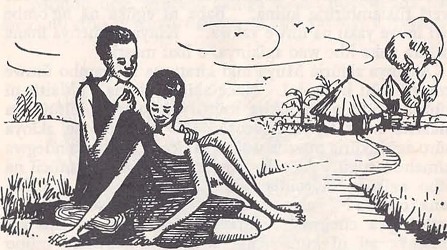I have come across several Kenyans on social media wondering whether God has reneged on His Biblical promise never to finish people with water. This is in the light of the Maai Mahiu dam tragedy which killed over 100 people. Whereas some may view this as an affront to the almighty Jehovah, to me this is a pattern that recurs often-human being question deities when faced with confounding challenges. Despite the current advances in science, the world still remains a mysterious place.
Most cultures have whispers of cataclysmic flood; the Great Flood looms large in the human narrative. These old tales from the depths of human memory recount a deluge so overpowering it wiped out societies, leaving only the lucky few to carry on. Most of us grew up reading about Noah and the Biblical flood story. But that’s one chapter in global anthology of flood stories.
The oldest recorded one is the Babylonian epic of Gilgamesh. In ancient Mesopotamia, the god Ea warns a man called Utnapishtim about a forthcoming flood that will wipe out humanity. This man with an impossible name builds a boat to save his family and animals. After enduring seven days of tempest, his ship lands on Mt. Nisir.
In Hindu mythology, Manu, the first human, saves himself and sacred scriptures by building a boat when he gets 411 of an impending flood. A fish postulated to be the god Vishnu in disguise guides his boat to safety. Among the folks of Hawaii, a man called Nu-u made a great canoe with a house on it and filled it with animals. Many waters came up and killed many people; only Nu-u and his family survived.
Among the Agikuyu people, there lingers an almost forgotten myth as old as time about the Great Flood too. In the beginning, Ngai-the almighty deity of the Agikuyu people, created all human beings. They increased and multiplied, but at some point, they became infected with a special type of evil-mang’ore.
Ngai became angry and decided to wipe all the people. Except two souls worthy of redemption—Nduhiu and Ngemi, a young pair destined to be the harbingers of humanity’s survival. Both came from the mbari(sub-clan) of Matu(ears) To save the chosen duo, Ngai gave them a flaming torch to guide them to a place of safety.
With the gift of a flaming torch to light their path, Nduhiu and Ngemi embarked on their odyssey, guided by the celestial brilliance of their deity. As rains pounded and waters swelled, the duo found themselves in the middle of a forest where a fig tree was eating itself. Ngai instructed them to harvest all the figs on the tree and pack them for the journey. Meanwhile, the deluge continued and all the people perished except the two who were guided by the flaming torch until they reached the top of Kirinyaga-the sacred mountain of the Agikuyu people.
Ngai then sent them a black beetle(njururi) which bore each of them on its right and left wings on a tour of the land as they waited for floods to abate. During this journey, they snacked on the figs. Finally, the beetle discharged the duo on a very wide plain which they named Weru wa Njururi(the beetles plain).
Nduhiu and Ngemi became the parents of the humanity and are the grandparents of Gikuyu and Mumbi and many other tribes. To keep their memories alive, it was agreed that Nduhiu and Ngemi be celebrated by both the old and young. Songs were composed to fete this duo to perpetuate their memory. When the elders sing Mugoiyo, they always mention how they were guided to the plains by the beetle. Young children also have singing game called ‘Njururi’ the wandering beetle.
In addition, Nduhiu and Ngemi are proper names for men and women respectively. ‘Nduhiu’ in Gikuyu language also means joyful celebrations while ‘ngemi’ denotes the ecstatic trilling of women.
Is this myth true? Or to pose a larger question, did the Great Floods historically happen or are they products of primitive imagination? In contemplating the Great Floods and their origins, we are reminded of Michael Meade’s wisdom—that myths are not merely to be believed but to be learned from. They are forever things that offer endless meanings to those willing to open their hearts and minds to the living mystery of life.
To embrace these myths is to accept the ever beckoning invitation to seek meaning of the unknown.
